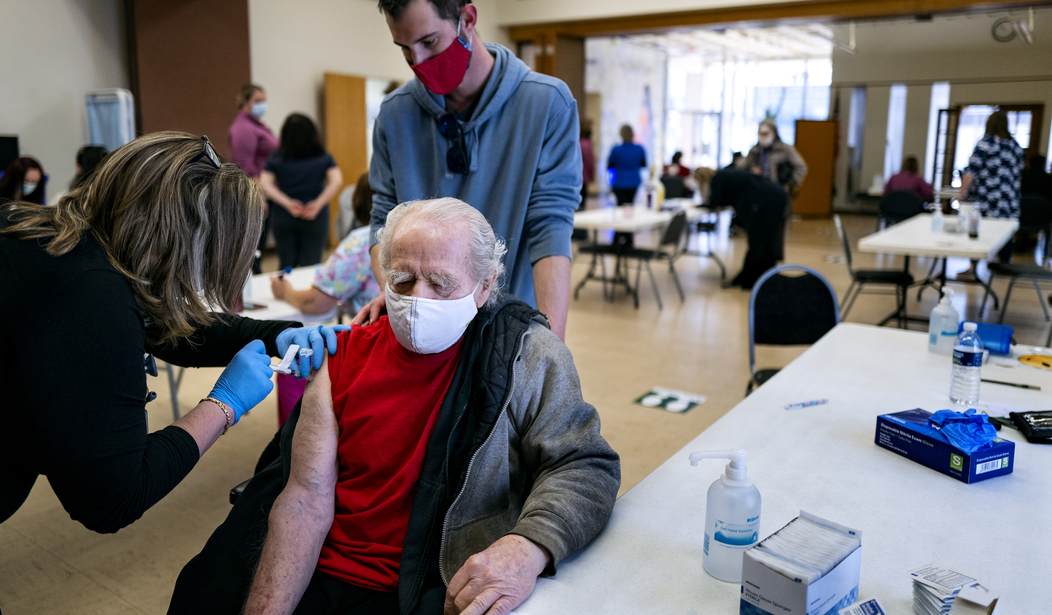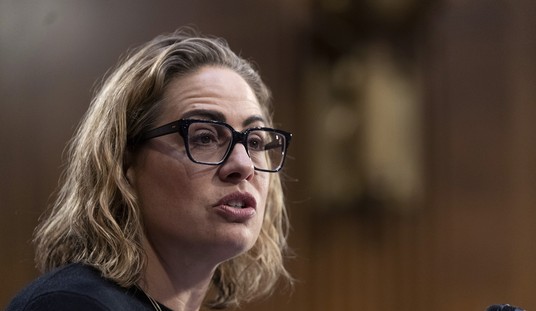I think Ed Yong has it right. At an individual level, it should be fine. All the rules still apply: The younger and healthier you are and the more immunity you have, the less there is to fear. With the new variant, your odds of getting infected have gone way up but your odds of landing in the hospital have probably gone down.
At a community level, it looks like a disaster in the making.
Let’s get the CDC’s predictions on the record first:
As of December 13, 2021, national forecasts predict 620,000–1,300,000 new #COVID19 cases will likely be reported during the week ending December 25, 2021. More: https://t.co/7AP4I3S9PU. pic.twitter.com/HpKMu8nEgR
— CDC (@CDCgov) December 15, 2021
America is averaging 120,000 cases per day or 840,000 per week lately. If the CDC is to be believed, with Omicron exploding across the map, there’s at least a chance that the country will see *fewer* cases by the end of next week. Which, uh, no.
Even the higher-end estimate of 1,300,000 for next week seems optimistic given that Omicron doubles in prevalence every two to three days. “Doubling every 3 days is a little jarring. 100,000 cases at Christmas would turn into 400,000 cases by New Years’ Eve,” noted Biden’s former COVID czar, Andy Slavitt, in a thread last night. Most current cases are still Delta, not Omicron, so the numbers may not increase that quickly over the next nine days. But even a “mere” 50 percent(!) increase week over week, as the CDC expects in its worst-case scenario, might be unreasonably optimistic. Epidemiologist Bill Hanage flagged this number in a thread this morning:

As fate would have it, Omicron is taking off right as Americans begin gathering for holiday parties and family get-togethers. The coronavirus has capitalized on large “superspreader” gatherings from the start of the pandemic, Hanage notes, and the hyper-contagious new variant is about to gorge on them thanks to Christmas and New Year’s. Omicron also appears to incubate more quickly than previous variants, making infected people infectious to others sooner than they were in the past. Yong points out that a recent superspreader event in Norway involved a group of people who’d been required to show proof of a negative test taken one to three days in advance. Evidently some person or persons at that event had tested negative, then contracted Omicron before the party, and then developed a large enough viral load that they were capable of infecting many others within 72 hours.
That makes mass gatherings right now the equivalent of gasoline on a fire that’s just started to rage. But it’s pointless to ask people to avoid them. Even leftists are complaining about pandemic fatigue lately, and the hype about Omicron being mild means most people will proceed with socializing in the belief that they have little to fear from infection. And based on the evidence so far, nearly all of them will be right.
As the virus spreads further and further, though, eventually reaching older and sicker people, the community dimension of the problem comes into play. The risk in having a gigantic wave of sickness at the moment isn’t that it might overwhelm hospitals, Yong says. It’s that hospitals are already overwhelmed.
Two years of trauma have pushed droves of health-care workers, including many of the most experienced and committed, to quit their job. The remaining staff is ever more exhausted and demoralized, and “exceptionally high numbers” can’t work because they got breakthrough Delta infections and had to be separated from vulnerable patients, John Lowe told me. This pattern will only worsen as Omicron spreads, if the large clusters among South African health-care workers are any indication. “In the West, we’ve painted ourselves into a corner because most countries have huge Delta waves and most of them are stretched to the limit of their health-care systems,” Emma Hodcroft, an epidemiologist at the University of Bern, in Switzerland, told me. “What happens if those waves get even bigger with Omicron?”
Fewer people on average should end up in the ER due to Omicron but no one expects no one to end up in the ER. Some percentage will, even if it’s a smaller percentage than we saw with Delta. How will hospitals cope? Craig Spencer, a doctor at Columbia Medical Center in New York, stressed the same point Yong made in a thread last night. Hospital staffs have been wrecked by COVID.
On top of that, healthcare workers are burnt out. Crushed. Exhausted after two years of the pandemic.
They are quitting in droves.
Those that stay are struggling with psychological scars or grasping to find the empathy that used to come so easily.https://t.co/Bt2v1sii54
— Craig Spencer MD MPH (@Craig_A_Spencer) December 16, 2021
The point is that even if Omicron cases turn out to be milder (which is no guarantee), the sheer number of expected cases can overwhelm an already fragile system.
Previously we asked you to flatten the curve.
But the next curve could truly flatten us.
— Craig Spencer MD MPH (@Craig_A_Spencer) December 16, 2021
Considering how contagious and capable of puncturing immunity the new variant is, a huge number of doctors and nurses who have been fully vaccinated will catch Omicron soon. What happens to already understaffed hospitals when so much of the staff is forced to stay home and recover? Even if every last Omicron patient in the U.S. somehow manages to avoid needing ER care, there are still tens of thousands who’ll need care for medical problems unrelated to COVID.
Slavitt’s advice is to level with the public and encourage them to resist socializing over the holidays with a promise that the Omicron wave is likely to be brief. The variant burns too hot to burn for long. So many people will get infected so quickly that it’ll soon run out of road to travel due to natural immunity, possibly within weeks:
If I were communicating this challenge to the country, I would emphasize that whatever sacrifice is required will be short-lived & we will be able to get back to business, school, work & travel. 16/
— Andy Slavitt 🇺🇸💉 (@ASlavitt) December 16, 2021
Data from South Africa also suggests that an Omicron wave is destined to be short-lived…
BREAKING: South Africa
BIG improvement in Gauteng & signs South Africa is near peak.Only 10% increase, week over week, overall.
Gauteng DOWN 43% week over week. (down 19% from 2 weeks ago).
Positive rate drifting ⬇️.
Deaths trending ⬆️, but still below levels of 6 wks ago. https://t.co/5BoABjfxzs pic.twitter.com/WO59qccorW— (((Howard Forman))) (@thehowie) December 16, 2021
…and apt to produce fewer hospitalizations, although maybe not so few as to spare American ERs from a crisis:

Cases in Gauteng province, South Africa’s hot spot, appear to have already crested at a moment when hospitalizations and deaths remain below Delta’s peak. Yet another data point signaling “mildness.”
I’ll leave you with this, a report on the UK’s lone Omicron fatality so far. Scientists have wondered for the past three weeks whether the mildness of the outbreak in South Africa is due to the variant being inherently mild or if that’s partly an illusion created by the high level of natural immunity in South Africa. The British man who died from the variant was in his 70s and had no immunity, it seems. He was unvaccinated.
"Had he been vaccinated, he would probably still be here."
The stepson of the UK's 'first Omicron victim' has told LBC he was fit and healthy but refused to have a coronavirus vaccine.@NickFerrariLBC pic.twitter.com/T16X5xZWrs
— LBC (@LBC) December 16, 2021







Join the conversation as a VIP Member